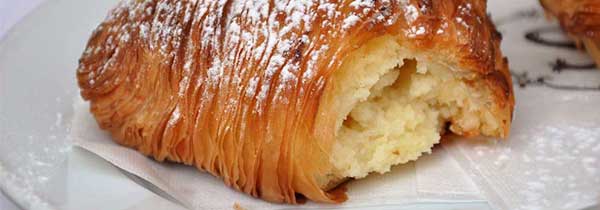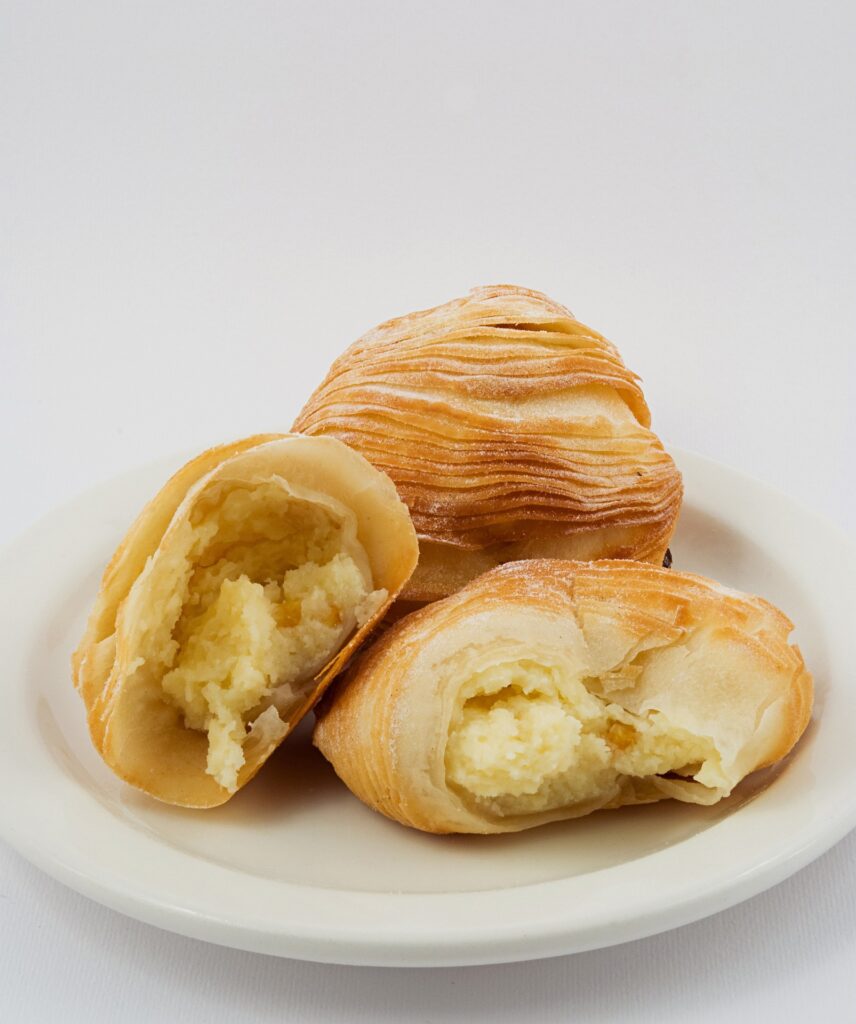
To say sfogliatella and think of Naples is one and the same thing, even though the typical Neapolitan pastry cake originated well outside the confines of the Neapolitan capital.
The sfogliatella was in fact born around 1600, in the enclosed convent of Santa Rosa da Lima![]() , in Conca dei Marini
, in Conca dei Marini![]() , on the Amalfi Coast, in the province of Salerno.
, on the Amalfi Coast, in the province of Salerno.
 The famous cake was born almost by chance. One day, some semolina dough cooked in milk was left over in the convent kitchen, and Sister Clotilde, the kitchen manager, instead of throwing it away, made a filling by adding dried fruit, limocello and sugar. The mixture was wrapped in puff pastry in the shape of a ‘monk’s hood’ and then baked in a hot oven.
The famous cake was born almost by chance. One day, some semolina dough cooked in milk was left over in the convent kitchen, and Sister Clotilde, the kitchen manager, instead of throwing it away, made a filling by adding dried fruit, limocello and sugar. The mixture was wrapped in puff pastry in the shape of a ‘monk’s hood’ and then baked in a hot oven.
The cake was very popular with the nuns and the inhabitants of the areas near the convent, and was named Santarosa in honour of the saint to whom the convent was dedicated.
It arrived in Naples only in the early 19th century, thanks to the confectioner Pasquale Pintauro, who managed to get hold of the original recipe, later modifying it to create the sfogliata riccia with its triangular shell shape. Today’s sfogliatella sees a crispy outer sheet made with water, flour and salt, rolled out very thinly and coated with lard, while the filling is usually made of semolina, milk, sugar, eggs and candied fruit, flavoured with cinnamon and vanilla.
 Sfogliatelle frolle
Sfogliatelle frolle
Of the curly sfogliatella, there is an ever-sweet variant, softer and more delicate, made with the same filling but with a shell made of short pastry; this is familiarly called ‘sfogliatella Frolla’.
This variant was created by Pietro Carraturo, owner of the pastry shop of the same name in Porta Capuana![]() , some 40 years after Pintauro’s discovery. The ‘frolla’ was strategically developed for people who had teething problems, which was no small thing in the Naples of those years, as the outer shell could be too crispy and sharp.
, some 40 years after Pintauro’s discovery. The ‘frolla’ was strategically developed for people who had teething problems, which was no small thing in the Naples of those years, as the outer shell could be too crispy and sharp.
Today, sfogliatella is produced in various flavours, including savoury ones; the ‘heart’ can be meat-based, fisch, or vegetable and cheese-based such as ricotta and spinach. Another variant of the riccia is the lobster tail usually filled with chocolate, chantilly cream or cream, but even here the imagination in the filling can vary according to personal taste.
Foto Credit: ©G.Miele/Guidesmart, ©davidexyz/pixabay.com
Video: ©G.Miele/Guidesmart
